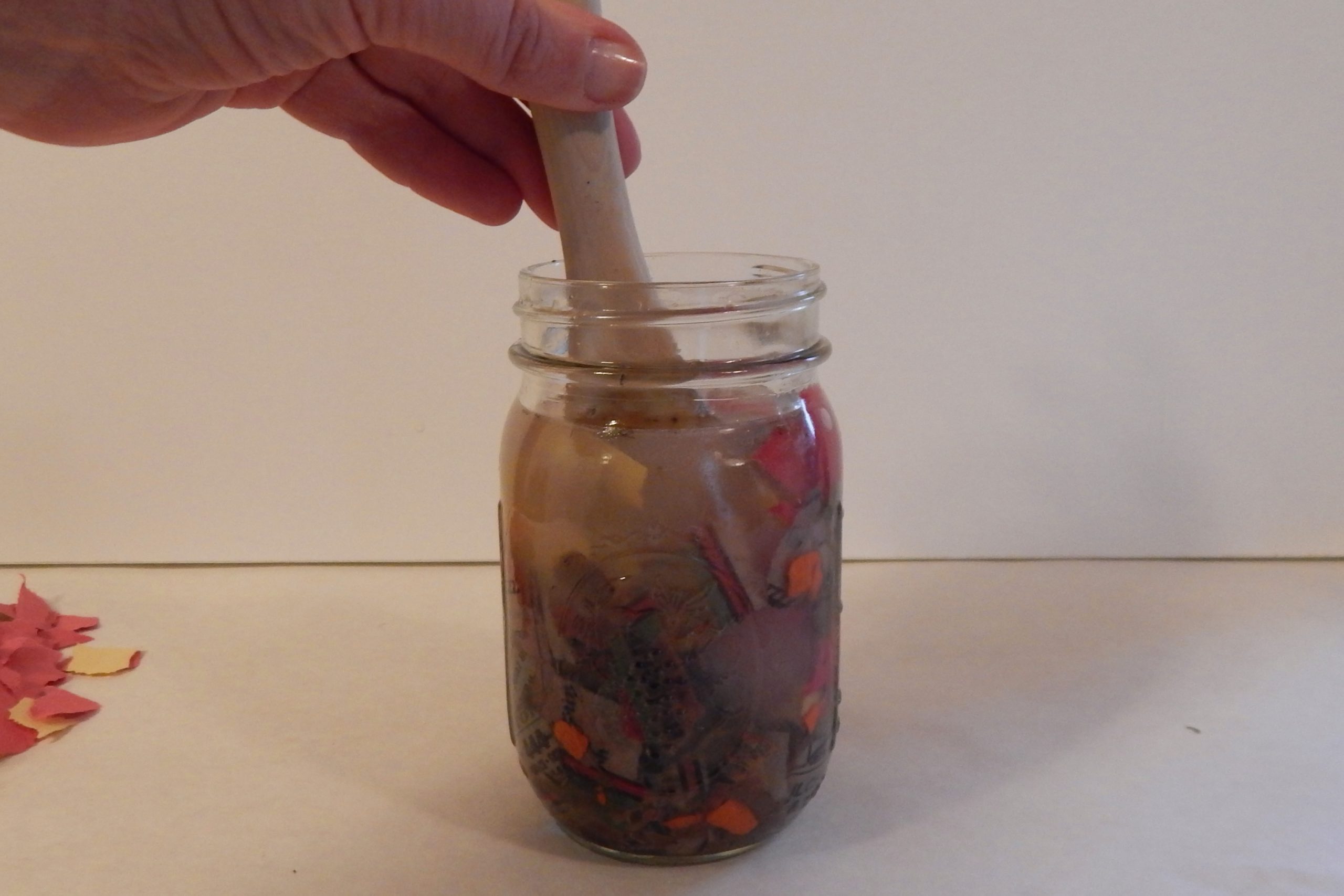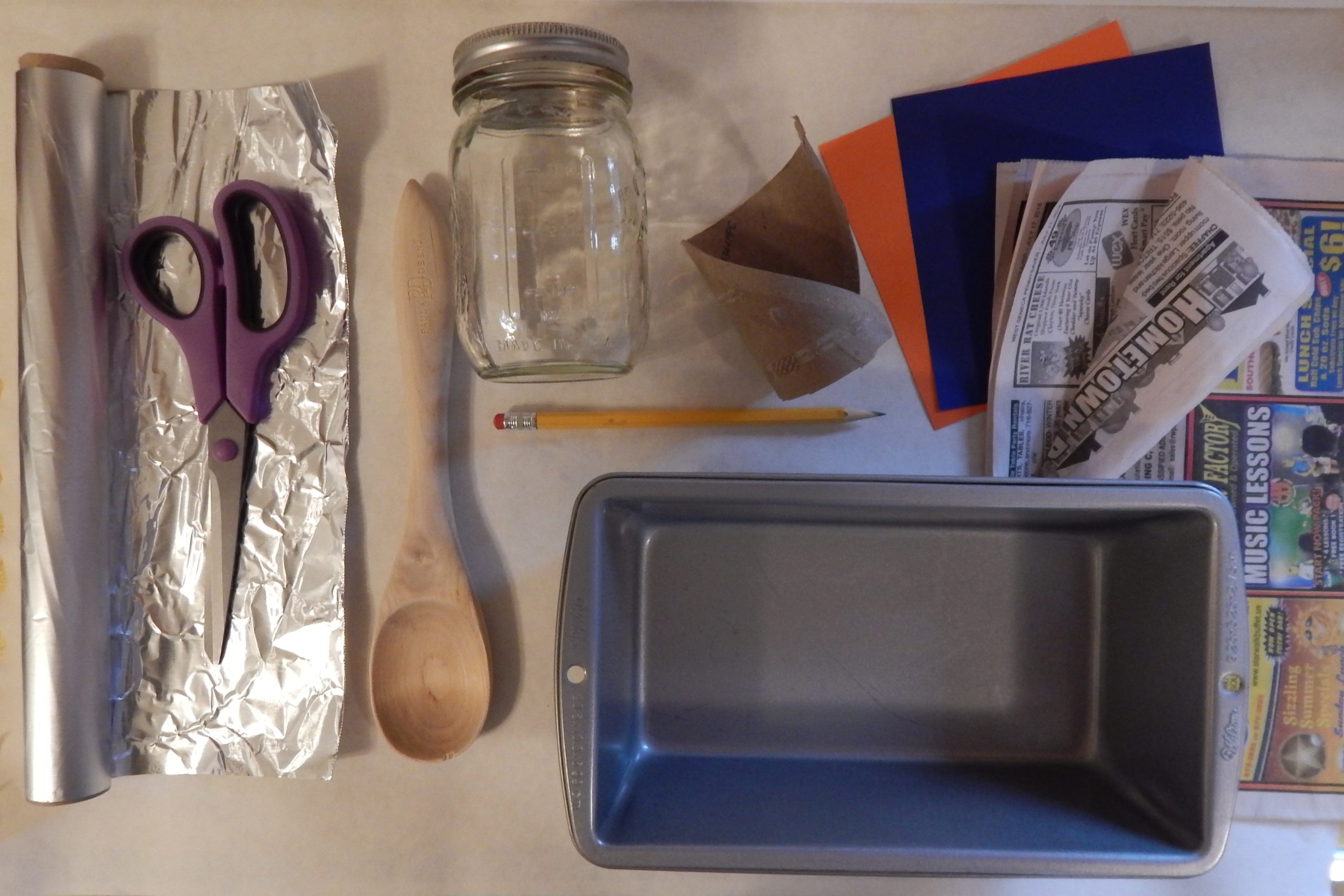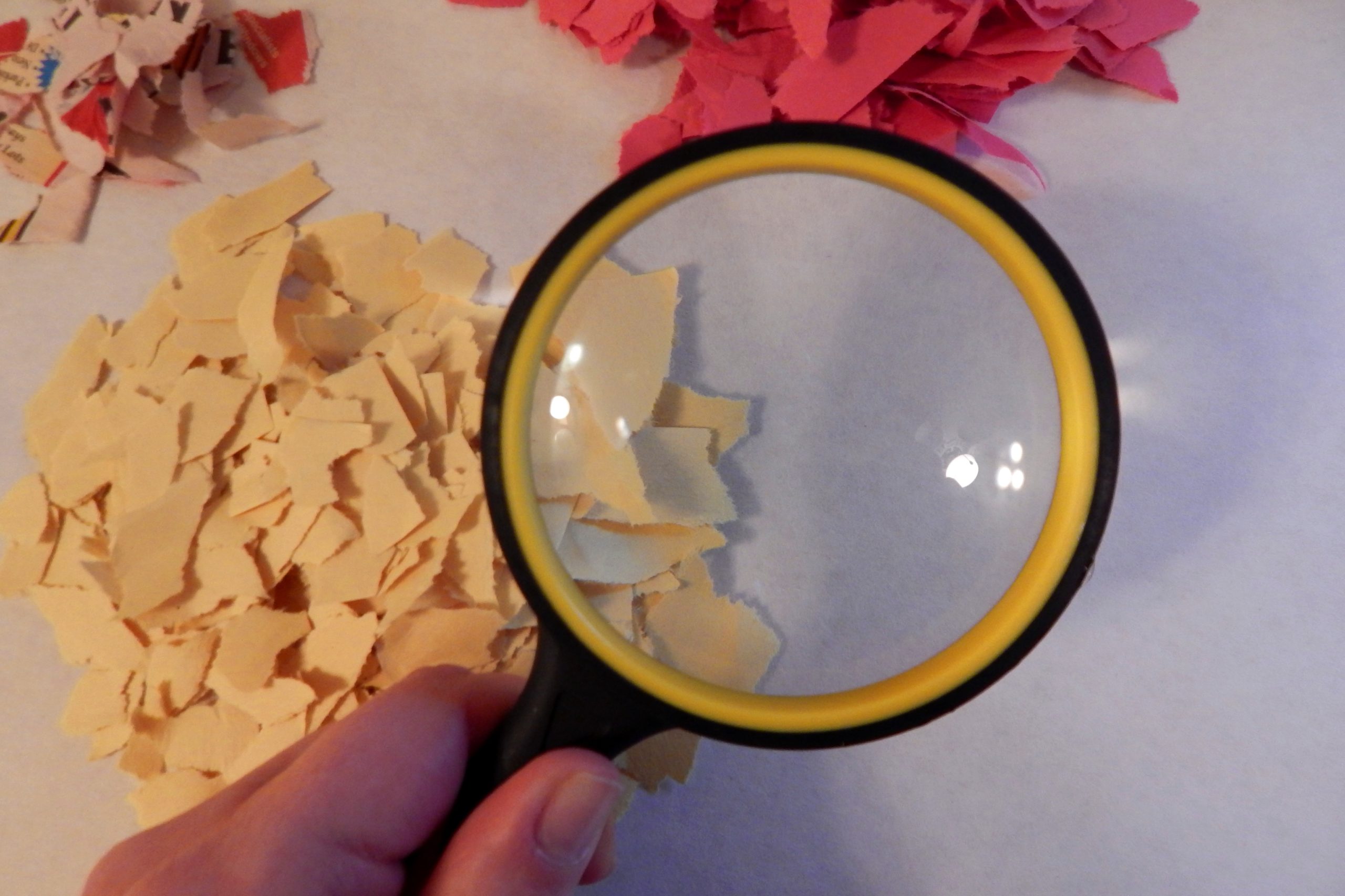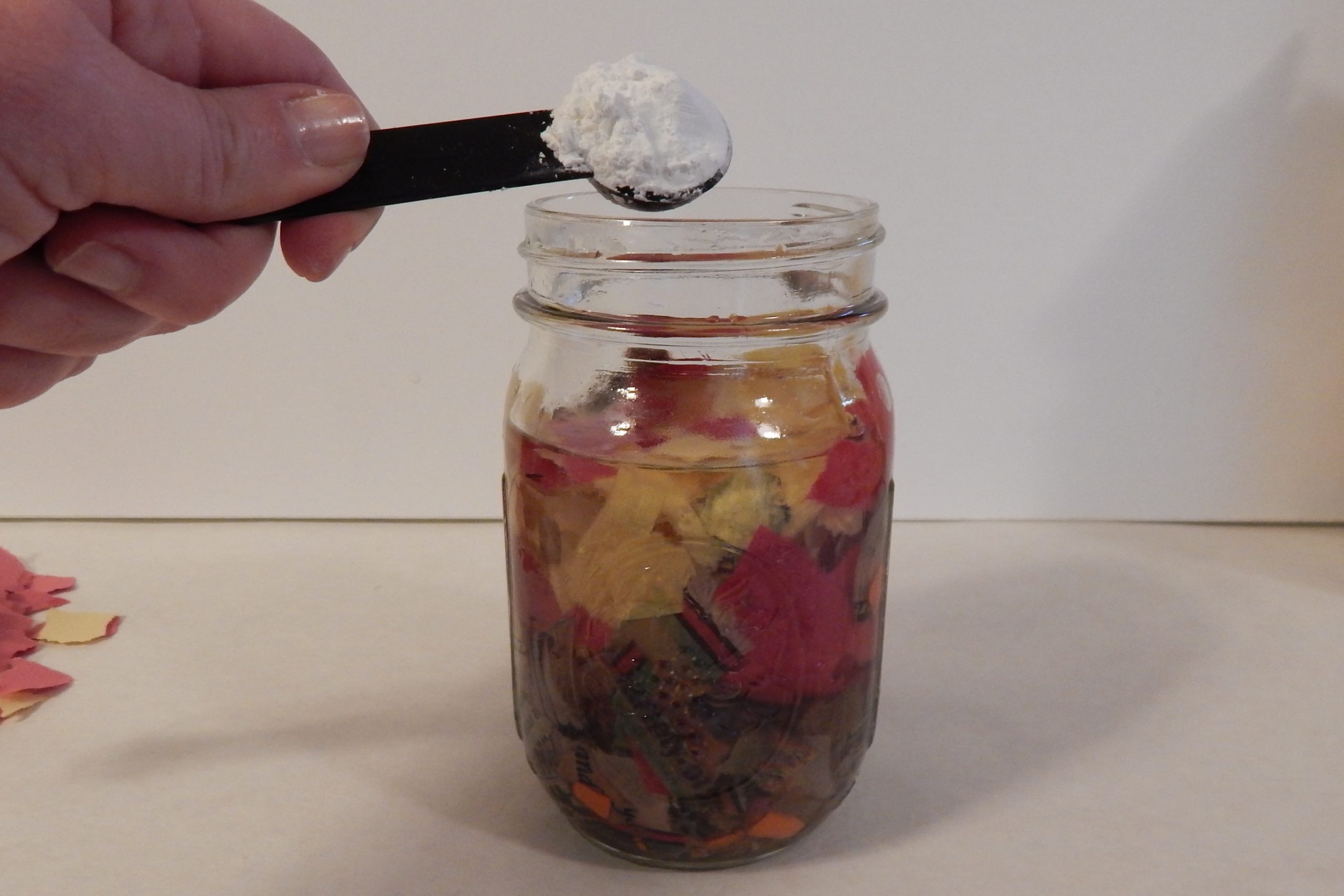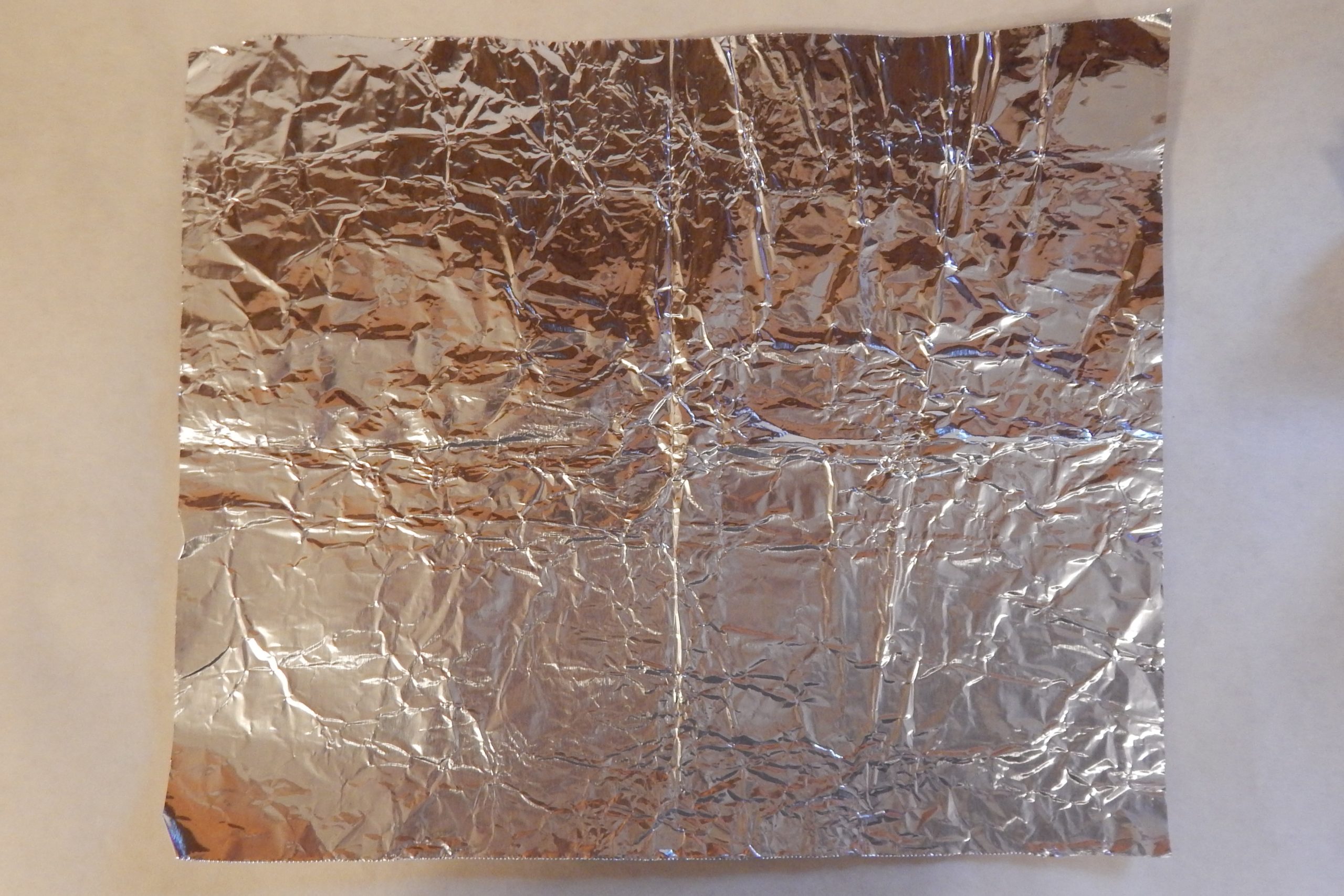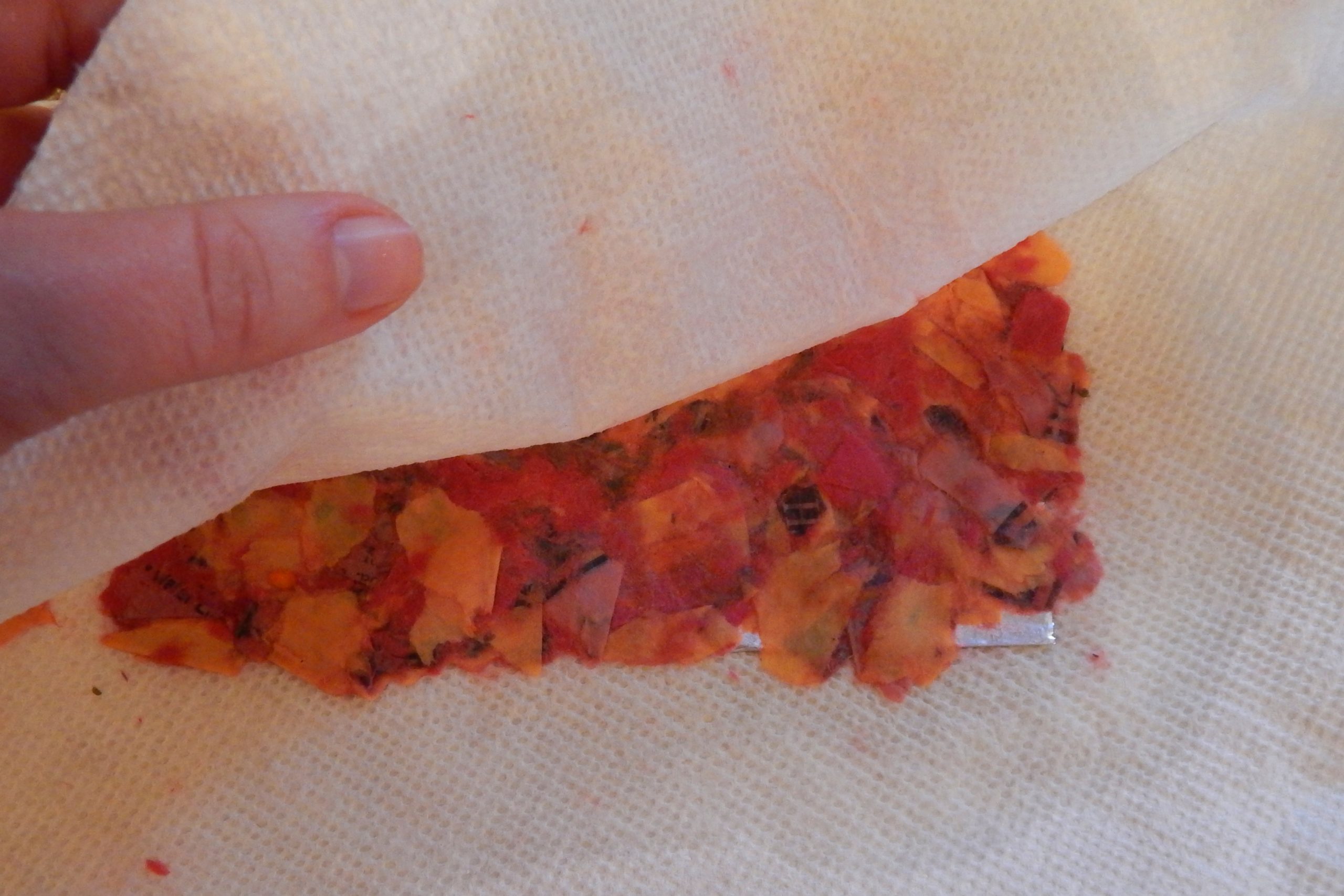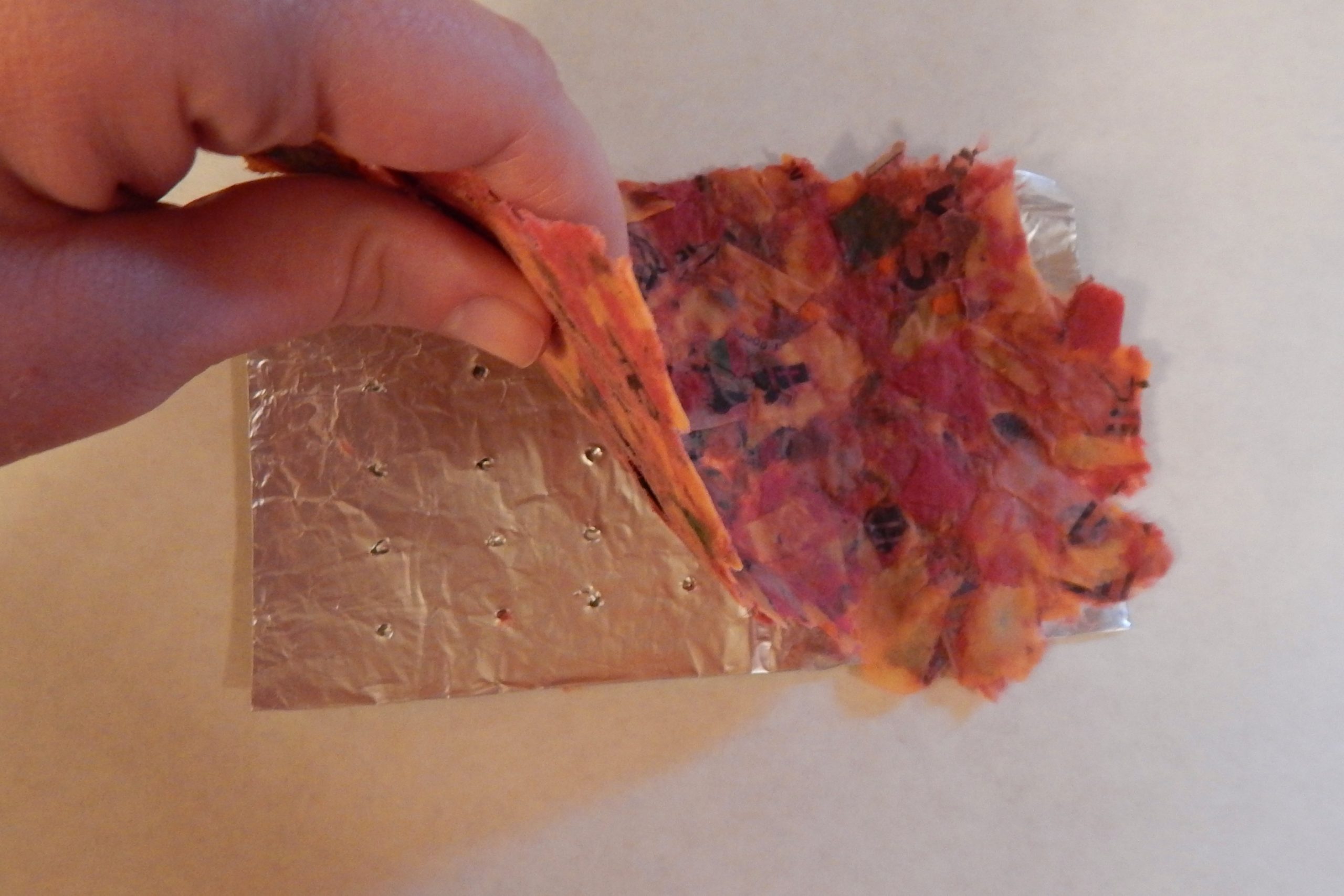Paper Making Science

Have science fun as a family! Complete activities with parental supervision.
Materials:
- Paper scraps (ex: the best scraps come from used construction paper, toilet paper tubes, crepe paper, and other thin, rough papers where you can see the fibers)
- Optional: Add other dried plant material (ex: small dried leaves, flower petals, small seeds, or kitchen spices like cinnamon)
- Aluminum foil
- Pencil
- Shallow pan
- Jar with tight-fitting lid
- Wooden spoon or other utensil
- Scissors
- Towel or paper towels
- Optional: Cornstarch can be added to make the paper stronger
Procedure
- Gather your materials and decide what kind of paper scraps you wish to use. Used construction paper and other fibrous paper that is not shiny and is easy to tear works best.
- Tear the paper into very small pieces, as small as you can. It is important to tear and not cut with scissors so that the plant fibers are preserved.
- Place the scraps into a lidded container like a mason jar. Use a wooden spoon to mash the scraps. This pulp is made up of the plant fibers originally used to make the paper.
- After mashing and shaking (with the lid on), let the jar sit for at least hours (or overnight) and let the hot water do the work of separating the fibers and creating the pulp. During that time you can mash and shake some more if desired. Your goal is to break-down the scraps and create a mushy pulp.
- While you are waiting on the pulp, make a makeshift screen out of aluminum foil. Take a square foot of foil and fold twice to create a four-layered piece. Cut this piece so it fits and lays flat in the shallow pan. The paper you create will be the same size as the foil piece. Now lay the foil piece on some layers of newspaper and carefully poke holes into it with a sharp pencil. Make the holes an inch from the edge and about a half inch from each other. The holes will let the water drain, but keep the pulp on top of the foil.
- Once a creamy pulp is achieved, you can mix-in some other dried plant ingredients if desired. If you want your paper to be a little stronger, add two tablespoons of cornstarch now. This is called “sizing” in the paper-making industry. It makes the paper less absorbent and easier to write on.
- Lay the foil screen on the bottom of the pan. Also lay a towel or paper towels flat next to the pan. Pour the pulp into the pan to completely cover the foil screen.
- Optional: If you wish to add a whole leaf or flower into the paper, now is the time to place it in the pulp.
- Carefully lift the foil screen up out of the pan, while keeping it flat. The pulp should stay on foil and the water drips through the drainage holes.
- Place this on the towel, fold more towel over it and press down to squeeze out the extra water from the pulp. The more you press, the faster your paper will dry. You can also lay the pan on top of this to help the paper dry flat.
- Congratulations! You have created a completely unique piece of paper by understanding the science of paper making! Now, what different materials and methods can you try next?
- Be sure to take a picture and share your results in the Facebook comments on the Buffalo Museum of Science or Tifft Nature Preserve pages!
What’s it all about?
Papermaking was invented around 2,000 years ago by creating a pulp out of plant fibers, much like we do today. Plant cell walls are made of a complex carbohydrate
called cellulose. Wood is made of 40-50% cellulose. Cotton is made of almost 90% cellulose. Cellulose is the most abundant organic compound on Earth, and humans cannot digest it.
To make paper, one must break-down the plant cellulose into separate fibers and mix with water. The water dissolves out some of the glucose molecules from within the cellulose. When the pulp is spread out to dry, the glucose molecules re-bond with the cellulose and help hold the fibers together to create paper.
Try It!
- Try experimenting with different sources of paper scraps or other plant fibers, like cotton from old denim jeans. What types of materials make what kinds of paper? After making your own paper, has your perspective of paper recycling changed? How?
